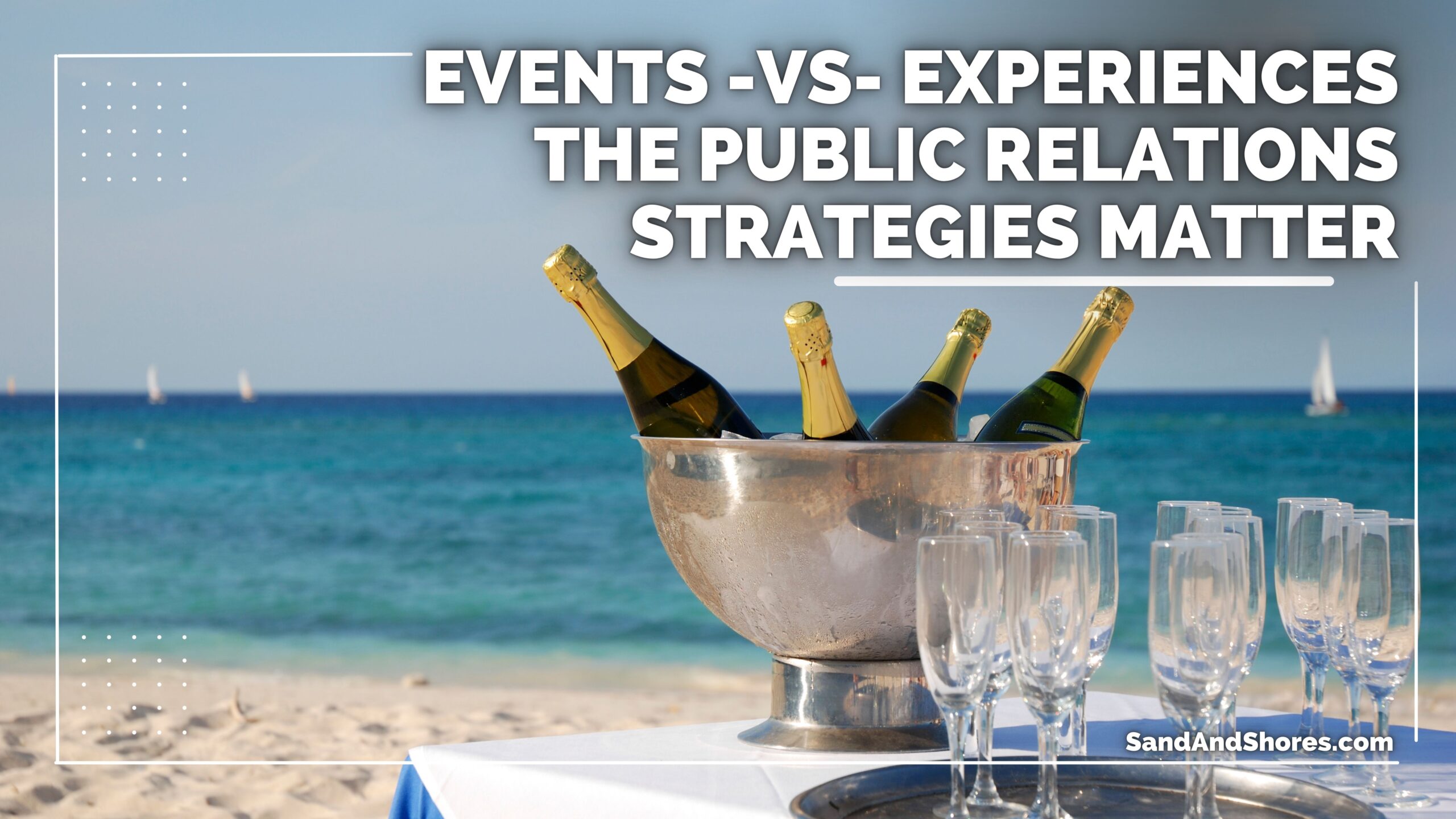by Tonya McKenzie
Brand experiences, different than an event, are on the rise. Basic business principles and every survey shows that a positive experiences with a brand leads to increased spending. So, businesses are putting out more resources to produce brand experiences. A study by PWC found that 86% of buyers are willing to pay more for a great customer experience. A Deloitte survey indicated that 40% of consumers will choose a brand over its competitors based on their perception of the brand experience. It’s easy to understand why brand experiences are increasing when it’s known that companies that prioritize customer experiences outperform their competitors by 80% in revenue growth. The public relations efforts that accompany the experiences and any events will be the ultimate impact indicator. But be clear, the strategies are not the same.
Experiential PR and event PR are both integrated strategies that use experiences to connect with audiences, but they differ in their scope and goals.
Experiential PR is a broader concept that encompasses a variety of tactics aimed at creating memorable interactions with customers. These experiences can take place in a variety of settings, both online and offline, and they can be tailored to specific target audiences. The goal of experiential PR is to foster positive brand perceptions and build long-lasting relationships with customers.
Event PR is a more specific form of integrated communications and marketing that utilizes events to generate buzz and reach a wider audience. Events can be used to showcase new products or services, introduce new campaigns, or simply raise brand awareness. The goal of event PR is to generate positive media coverage and increase brand engagement.
Here is a visual that summarizes the major differences between experiential PR and event PR:
| Feature | Experiential PR | Event PR |
| Scope | Broader, can include a variety of experiences | More focused on events |
| Goal | Foster positive brand perceptions and build long-lasting relationships with customers | Generate positive media coverage and increase brand engagement |
| Settings | Varied, can include online and offline | Typically offline events |
| Examples | Interactive installations, pop-up stores, experiential tours | Trade shows, conferences, product launches |
In practice, experiential PR and event PR often overlap. For example, a brand may use an event as an opportunity to create an immersive experiential experience for its customers. However, it is important to understand the distinction between the two approaches, as this can help you develop the most effective strategy for your brand.
Here are some additional points to consider:
- Experiential PR is often more expensive than event PR because it requires more creativity and planning. It often brings in more creators and outside influencers for impact.
- Experiential PR can be a more effective way to reach a specific target audience because it allows you to tailor the experience to their interests and needs. It usually hones in on a new product or brand for a certain demographic.
- Event PR can be a more scalable way to reach a large audience because it can be used to target a wider demographic. Events usually start small and grow in size due to demand.
Ultimately, the best approach for your brand will depend on your specific goals, target audience, and budget. If you want to create a lasting impression on your customers and build strong brand relationships, then experiential PR is a powerful tool to consider. There are a growing number of companies that specialize in experiences. If you need to generate quick media coverage and reach a large audience, then event PR may be a better option.

Follow Sand & Shores on Facebook, Threads, and Instagram.
For media inquiries or if you would like more information about this topic, please contact Tonya McKenzie at tmckenzie@sandandshores.com | Threads: @TonyaMcKenziePR | Instagram: @TonyaMcKenziePR

